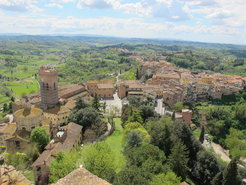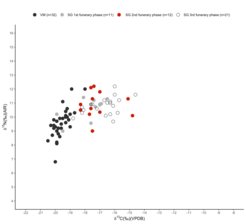Collapse or Transition to Resilience? Agricultural Practices in Italy after the Fall of Rome
In a new study published in Journal of Archaeological Science: Reports, a team of researchers from the Department of Archaeology, MPI-SHH and the University of Pisa reveals changes in the human diet in Tuscany (central Italy) following the fall of the Western Roman Empire.

The fall of the Western Roman Empire and the beginning of Europe’s Medieval period are known for significant political, cultural and economic upheavals. However, the dynamics of these changes remain little understood. In a new study, researchers set out to study the diets of ancient communities living near the heart of the Roman Empire, and found that rather than a steep descent into worst nutrition regimes, the diets of people in central Italy show increased diversity, including a higher dependence on the resistant crop millet.
The application of stable carbon and oxygen isotope analysis of tooth enamel and carbon and nitrogen stable isotope analysis of bone collagen revealed a long-term nutritional transition from Late Antiquity (3rd century-5th centuries AD) to the Middle Ages (mid 6th-mid 13th centuries AD) in central Italy. While a traditional Roman diet based on C3 plants (e.g., wheat) was documented in the former period, growing resilience on C4 plants (i.e. millet) characterized the dietary profile of the latter.

Despite the common reference to the Middle Ages as an impoverished and static “Dark Ages,” the current data shows no evidence for a dramatic collapse; rather, the authors argue that evidence of disruption in the dietary regime of the ancient Tuscan communities can be better described in terms of increased heterogeneity, with greater agricultural independence at a local level and increased land use based on the diverse cultivation of “minor crops.” This dietary transition could have been a cultural adaption to a combination of factors, including climatic fluctuation and the sociopolitical and economic constraints that occurred during the post-Classical age.
Being one of the few studies that strictly focuses on the transition between Late Antiquity and the Middle Ages in Italy, the isotopic reconstruction of Tuscany strives to contribute to the debate of Western Rome’s collapse in the Mediterranean area and its impact on diet, showing a picture of a gradual, complex trend in dietary variability of ancient communities in this part of the world. The authors argue that more context-specific, multidisciplinary studies of this kind are required to truly understand this key historical transition.

